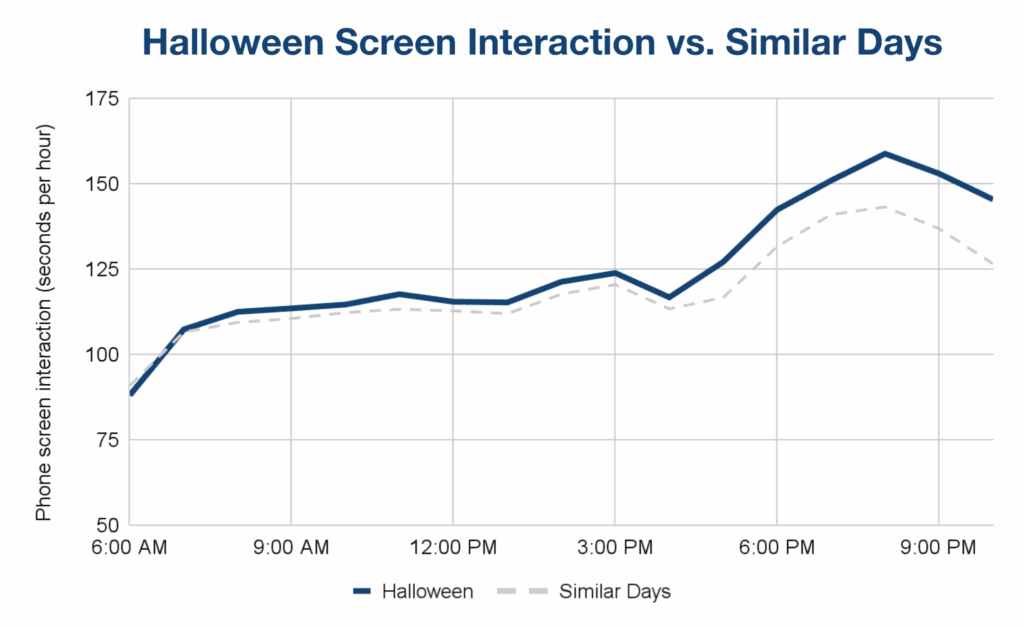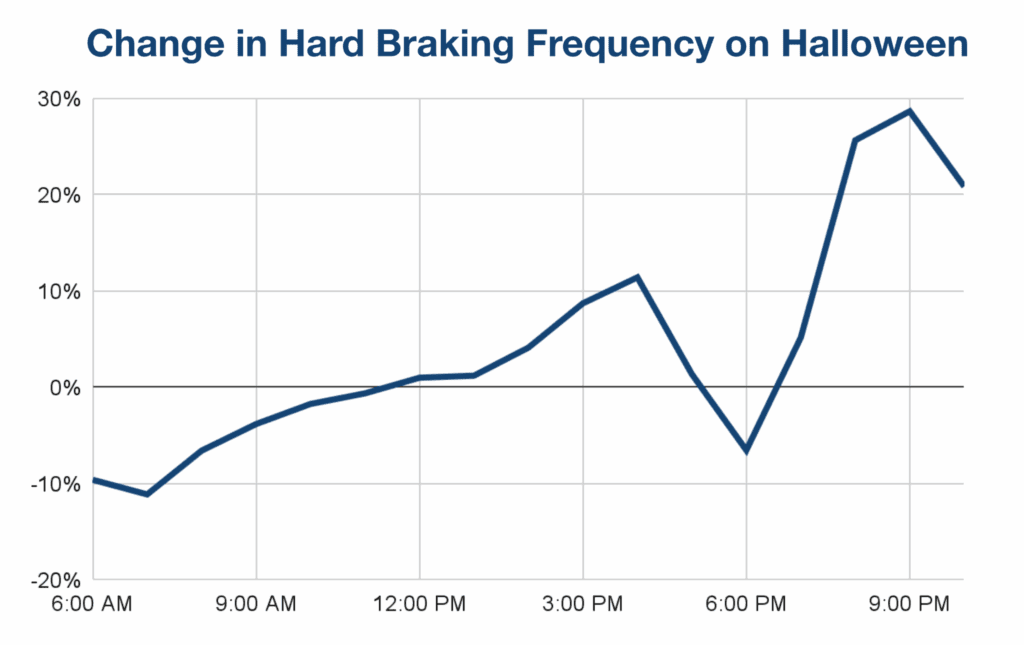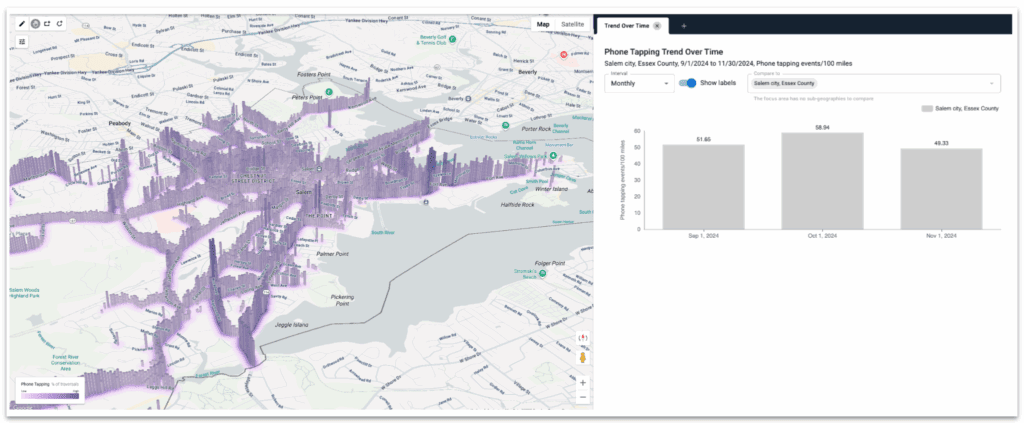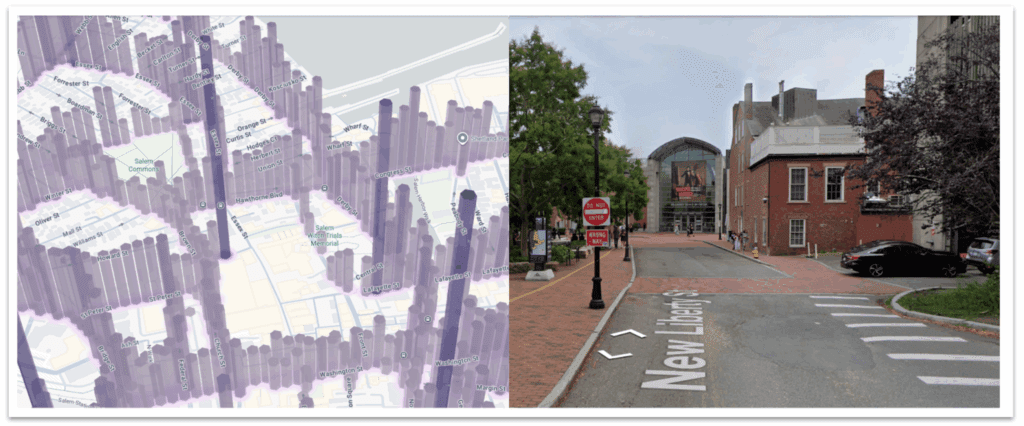Road Risk Alert: Distraction rises 8.1% during trick-or-treating on Halloween

Forget ghosts and zombies. Halloween night is one of the riskiest of the year for pedestrians, especially children.
According to NHTSA, the risk of a pedestrian fatality is 43% higher on Halloween than on an average night, with four additional deaths each year. Since over 60% of urban traffic fatalities happen at night, the risk is even greater on Halloween night.
CMT’s latest analysis looked at Halloween driving from 2022 to 2024, comparing it to similar days in the weeks before and after the holiday. The findings show that distraction rises by 8.1% during peak trick-or-treating hours. After dark, driving risks cast an even bigger shadow with drivers slamming on the brakes 27.2% more than usual — a sign of near-misses on the road.
Distraction spikes during trick-or-treat hours

On Halloween, distracted driving creeps up by 5.4% compared to other similar days — from 1 minute and 59 seconds per driving hour to 2 minutes and 5 seconds. Distraction is 2-3% higher than usual through the morning and early afternoon, but it jumps sharply once trick-or-treating begins. At 5:00 p.m., the Halloween distraction gap widens by 8.9% and stays above 8% through 8:00 p.m. At 8:00 p.m., the gap surges to 12.5%, the largest of the night.
While CMT only analyzes the sensor data signals from a driver’s smartphone, this increase in distraction could be due to activities connected with Halloween: coordinating party details and arrival times, sharing and receiving photos of costumes, and other social activities.
Hard Braking is a frightening sign of risky driving

Distraction isn’t the only risk that jumps after dark. Hard braking, when drivers slam on the brakes, also goes bump in the night.
Hard braking is a telltale response to risky behaviors like distracted driving or speeding. Drivers who hard brake most often are 1.7x more likely to crash.
At 6:00 p.m., just after trick-or-treating begins, and when sunsets across the US typically end, hard braking falls 6.5% — a brief window when drivers may have heightened awareness of pedestrians and are driving slower. But this awareness doesn’t last long.
By 7:00 p.m., hard braking on Halloween is 5.2% higher than a similar day of the week. Between 8:00 and 9:00 p.m., the hard braking gap skyrockets 27.2%. At the same time, distraction is 11.3% higher. The combination of darkness and lurking distraction makes the late Halloween hours a high-risk time.
Across the country, October 31st brings jumpscares on the road, but what happens in one city where Halloween lasts all month long?
Looking at America’s Halloween Capital, Salem, Massachusetts

To dig into road risk trends throughout October, we analyzed driving behaviors in one of the nation’s most iconic Halloween destinations — Salem, Massachusetts. Each year, the city can draw over 1 million visitors for its monthlong Halloween festivities.
We used CMT’s StreetVision platform to determine if drivers in Salem are more distracted during the Halloween season.
We found that distracted driving rose 16.7% in October 2024 compared to the months before and after Halloween. During these four weeks in Salem, there were 59 instances of distraction for every 100 miles driven, compared to 50 instances of distraction in September and November.
Halloween Hotspots: Essex Street

StreetVision also revealed distraction hotspots in busy areas like Essex Street near the Salem Witch Trials Memorial, where drivers used their phones during 9% of trips. Drivers are likely more distracted in these areas as they search for parking or navigate crowded, unfamiliar streets. They may also be taking photos of the Halloween decorations. By November, distraction in that same location dropped to 1.1%, highlighting how road risk changes based on local activity.
Understand your city’s Halloween risk
Sign up for a StreetVision demo to understand the risk your city faces on Halloween and beyond.